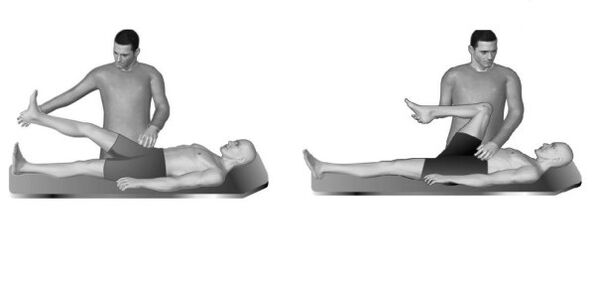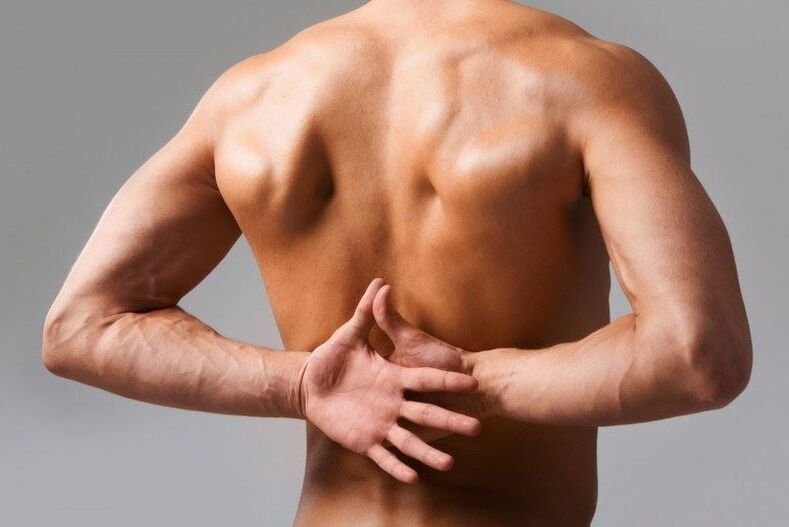
Osteochondrosis refers to degenerative, dystrophic lesions of the spine and joint tissues that progress with progression. The more neglected the disease, the more pronounced the symptoms that affect people's way of life and ability to work. When the structure of the spine is damaged, a person develops problems such as how to tolerate pain, how to sleep with cervical osteochondrosis.
In practice, lesions in various parts of the spine, coccyx, and joints often occur. Previously only people over the age of 25 would get sick, but there has been a recent trend of "resurrecting" the disease. Symptoms of osteochondrosis in adolescents or young adults have become common.
reason
The causes of osteochondrosis can vary, depending on which part of the body is damaged. After any injury, the normal structure of the coccyx of the spine is disturbed, and the process of salt deposition and destruction of the disc structure begins. Overweight people, sedentary lifestyles, and athletes are all susceptible to this effect.
During pregnancy, the risk increases due to weight gain and vitamin deficiencies. Lymph nodes also enlarge during pregnancy. The heart, other organs are affected by this, and combined with osteochondrosis, it is very dangerous. Increased load on the shoulders, knees, neck and tailbone.
Almost everyone develops spinal osteochondrosis as they age. Occupations associated with prolonged sitting, monotonous movements pose a threat to the neck, lower back and tailbone. The following conditions can affect the occurrence of the disease:
- genetic susceptibility;
- pregnancy process;
- endocrine, infectious diseases;
- Poisoning or exposure to drugs, toxic substances and chemicals;
- Eating disorders, lifestyle.
In addition to the spine, cases of articular osteochondrosis often occur. The pathology is dangerous to the knee, elbow, shoulder, coccyx. When considering osteochondrosis of the knee, it is worth paying attention to causes such as obesity or malnutrition, lifestyle related to overloading the legs, and physical injuries or inflammatory processes.
Unlike the joints, the muscles of the legs are under enormous load, so the latter are affected more often.
Symptoms of injury to the elbow joint can be observed as well as osteochondrosis of the current neck or chest area. Often the pathology is combined with arthritis or arthropathy. Elbow injuries and persistent overwork are predisposing factors.
Due to the constant movement of the neck and head, as well as the hands, over time the joints begin to wear down and salt deposits develop. This can lead to osteochondrosis of the cervical spine and shoulder joints. The cause may be congenital, compression of the shoulder plexus or external factors. Injuries to the neck, shoulder blades, or hands can lead to osteochondrosis.
spinal osteochondrosis
Spinal osteochondrosis occurs in different departments. The most common is lumbar spine disease. The disease is associated with severe pressure on the lower back and is dangerous due to the threat of pinching the sciatic nerve and forming a hernia.
Symptoms such as soreness that worsen at night or during exercise. It can be difficult to find the right posture during sleep and rest. "Low back pain" or impaired sensitivity in the legs may occur in the lower back, especially the knees, coccyx. As the disease progresses, the lymph nodes become inflamed.
The coccyx area is often affected, making it difficult to sit properly. If the sciatic nerve in the coccyx area becomes inflamed, the pain can descend to the lower extremities, buttocks, and down to the knee joint. To reduce pain, it is best for a person to take a comfortable position and drink antispasmodics, relaxants, or pain relievers.
During pregnancy, osteochondrosis in the lower back can sometimes make it difficult to give birth normally. Then you need to operate. Take antispasmodics carefully during this time to avoid harming the fetus.
In spinal disorders, doctors use the identification of a specific symptom to make a diagnosis - a Lasseger symptom. For neuropathologists, Lasegue's symptoms are important in determining the extent of the disease.
Symptoms of Lasegue always occur when a neurological disorder is suspected. With the Lasegue method, the doctor slowly lifts the leg in a straight state, not allowing the knee to bend. The Lasegue sign is tested in three stages by flexing and extending the leg. Pain based on certain postures. During pregnancy, the Lasegue method is not performed.

Osteochondrosis of the neck is often associated with lesions of the shoulder and elbow joints. Pain in the neck and head, spread to the shoulder blades and arms, and heart pain. They are purchased with antispasmodics. There is noise in the ears and vision loss.
Movement of the neck, head, or shoulder blades can exacerbate the pain. In the acute stage, lymph nodes may be involved, and neck and elbow muscle pain may occur. Emergency treatment is then required to prevent heart, brain, and blood vessel complications.
Patients are often tormented by the question: How do patients with cervical osteochondrosis fall asleep and properly rest their head on the pillow?
This is especially true for women during pregnancy. Only antispasmodics and treatments help.
Pathology in the thoracic region is less common. Record symptoms of pain in the heart, shoulders, shoulder girdle, and neck. The lymph nodes are inflamed, and sometimes the pain can't lift your hands and take a deep breath. Osteochondrosis is often mistaken for heart pain. If you take antispasmodics, the muscle pains and the heart goes away. If the disease is in an advanced stage, antispasmodics do not always help, and symptoms such as:
- Sensitivity of the violation of the legs;
- Increased pain at night, movement, breathing;
- Burning sensation, itching in the heart, in the shoulder blade area, along the ribs.

Often in practice, osteochondrosis affects several parts of the spine. Symptoms during pregnancy are especially unpleasant, as antispasmodics are not desired. Rescue and start treatment in time.
Diagnosis of osteochondrosis involves performing hardware studies, questioning, and examining patients. It is important to watch for specific signs such as Lasegue symptoms. To rule out lesions of the heart and other internal organs, ultrasonography and electrocardiogram were performed. X-rays, MRIs, CTs are done to examine the spine.
Treatment of osteochondrosis should be lengthy and complex. Treatment is divided into symptomatic treatment and rehabilitation treatment. For pain, muscle relaxants, NSAIDs, analgesics, and antispasmodics are prescribed. Muscle relaxants not only provide long-term pain relief, but also improve mobility. Relaxants have peripheral and central effects. Which drug to choose is up to the doctor.
Treatment includes a combination of physical therapy, massage, and reflexology. Healing allows manual treatments, banks, salves and folk methods.
articular osteochondrosis
Often elbow, knee, shoulder joint disease. Osteochondrosis of the knee often occurs in pregnant women with pain and limited mobility. The elbow joint is characterized by symptoms such as pain, swelling, and deformity during exercise. Incorrect choice of hand posture can lead to discomfort and pain. In the affected area, the lymph nodes become inflamed. In addition, lymph nodes can not only be injured in the affected area, but they can also trap adjacent lymph nodes.
For proper diagnosis, X-rays, CT, MRI, inspection, palpation, and checking for symptoms of Lasegue are used. To restore the function of muscles and joints, complex treatments are required. You need massage, ERT, antispasmodics, NSAIDs, relaxants. In advanced cases, take action. But first, conservative treatment is always prescribed, especially during pregnancy.
























